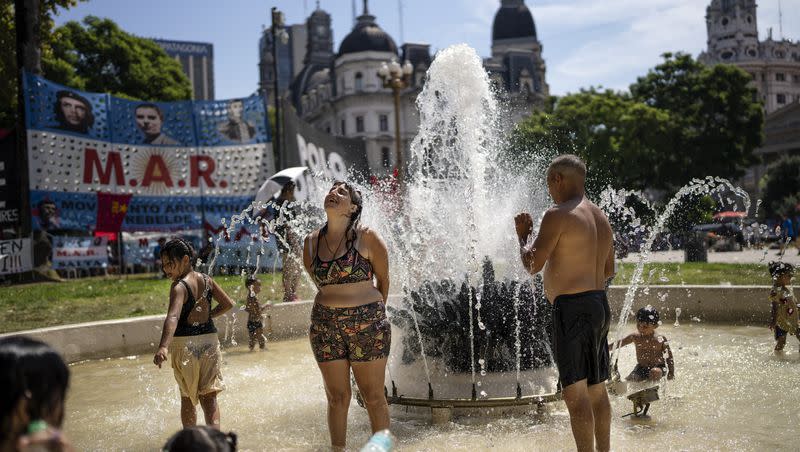Parts of South America stifled under a record-breaking winter heat wave

Areas of South America were under intense winter heat waves this week, due to a combination of El Niño and climate change factors, according to weather monitoring services.
The news: The heat wave spans parts of Argentina, Chile and Paraguay, resulting in temperatures in the high 80s (Fahrenheit), as opposed to the usual 40-50 degree winter weather. Parts of Chile and Argentina have even pushed over 100-degree temperatures in July, which is extremely unusual in the area for this time of year, per CNN.
While heatwaves aren’t uncommon in this part of the globe, Maximiliano Herrara, a climatologist, told CNN that this heat wave displays “exceptional characteristics for its area, duration, intensity, and being early August.” Herrara added, "Dozens of stations are recording their highest-ever temperatures in the first half of August.”
High temperatures peaked at the beginning of the week and are expected to persist through the weekend in some areas, The New York Times reported.
Related
Too hot, too cold, just right: How studies say climate affects brain function
Monsoon season in Utah: Major thunderstorms, wild weather hit across state
Key quote: “Climate change is not a distant scenario; it’s here and it’s urgent to act,” the National Meteorological Service of Argentina said in a Facebook post.
What’s driving the heat? Scientists have attributed this season’s global heat waves largely to climate change end El Niño, Reuters reported.
An El Niño event happens when the Pacific Ocean’s trade winds weaken, pushing warm water east and toward the West Coast of the Americas. El Niño is usually associated with warmer, wetter weather and higher water temperatures in the Pacific, per the National Ocean Service.
El Niño and El Niña episodes usually last around nine to 12 months, and occur every two to seven years on average, but usually arrive on irregular schedules.
The bigger picture: July 2023 was marked as the hottest month in the world’s recorded history as a result of El Niño and increasing global temperatures.
Areas of North America, Asia, Africa and Europe are in the midst of extreme heat waves, according to the World Meteorological Organization.

